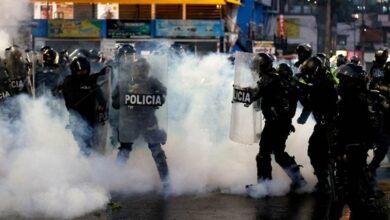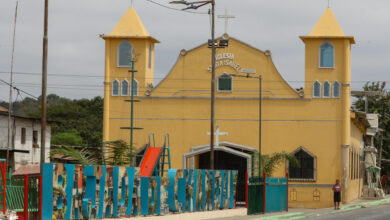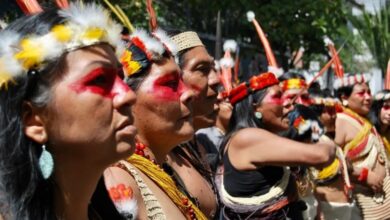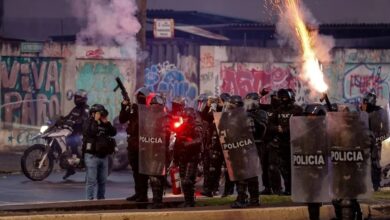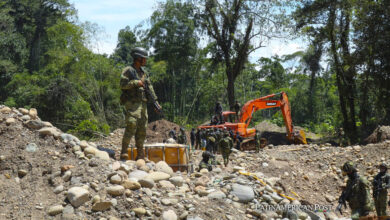Ecuadorian Carapaz Inspires Country as Sprinters Triumph In Giro’s Twelfth
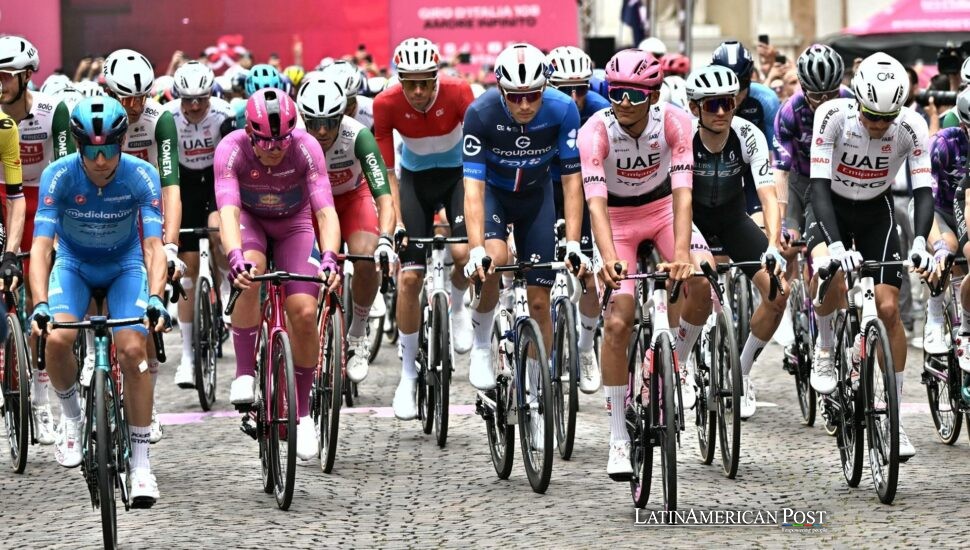
Stage twelve of the Giro d’Italia delivered a flat-out Modena-to-Viadana sprint won by Dutch flyer Olav Kooij, yet talk along the barriers still centered on Ecuador’s Richard Carapaz, whose daring solo raid twenty-four hours earlier rattled the overall standings badly.
Sprinting Theatre from Modena to Viadana
Fans expecting a mid-race breather were treated to a 172-kilometre drag race across Emilia-Romagna’s pancake-flat heartland. Two early category-three rises briefly teased the breakaway artists, but the peloton kept every move on a short leash, knowing full well that sprinters’ teams had circled the date in red ink.
Jumbo–Visma nailed the script. With five kilometers to go, Wout van Aert swung off the front like a locomotive, easing into the sidings, leaving teammate Olav Kooij a pristine runway. The 23-year-old Dutchman—already knocking on the Giro door in earlier stages—launched his sprint with 180 meters left and never looked back. Caleb Ewan and Jonathan Milan were forced to settle for the minor placings, heads dipped, legs empty.
Moments later, Kooij grinned beneath the finish-line arch and thanked Van Aert on live TV. “He is the best lead-out in the world,” the winner said, still trying to catch his breath. Teammate back-slaps and prosecco fizz against the podium backdrop punctuated his words.
Behind that joyous chaos, the general-classification heavyweights enjoyed a comparatively calm day—on paper. Isaac del Toro, the 21-year-old Mexican revelation wearing pink, could be seen weaving through the bunch with experienced lieutenant Matteo Trentin glued to his shoulder. The aim was simple: stay out of trouble, harvest any leftover time bonuses, and avoid the dreaded late-stage splits that have bitten countless GC hopefuls.
He succeeded. Del Toro snatched a precious two-second bonus at an intermediate sprint, nudging his overall cushion to 31 seconds over Spain’s Juan Ayuso. Speaking to EFE minutes after rolling across the line, the youngster sounded as sharp as he looked: “Flat stages can be more stressful than mountains,” he said, sweat streaking the pink jersey. “A gap of one or two seconds here can decide a whole race later.”
Elsewhere in the pack, Primož Roglič avoided a minor crash with acrobat-like reflexes, and Simon Yates could be seen sharing a joke with Tony Tiberi—evidence that, at least for one afternoon, the climbers’ legs got a momentary reprieve. Their teams, however, spent the evening poring over weather charts and gradient profiles; the big hills are coming, and no directeur sportif wants surprises when the road tilts skyward.
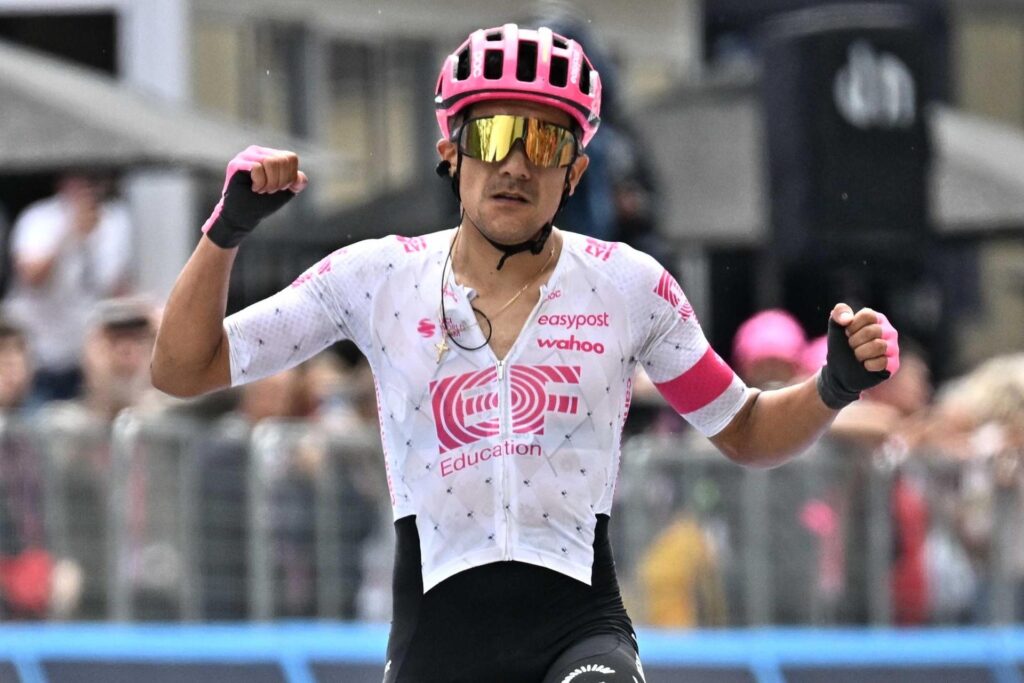
Carapaz’s Stage-11 Masterstroke Reverberates
Even as Kooij donned the stage winner’s jersey, most journalists’ recorders were primed for stories about the previous day’s fireworks. Richard Carapaz, Ecuador’s Olympic champion, had blown open Stage 11 with a vintage raid on the rugged ascent to Pietra di Bismantova. Ten kilometers from the line, he spotted hesitation among favorites, clicked to a bigger gear, and vanished up the road.
Carapaz later told EFE his attack was “a decision of the gut, not the radio.” That gut served him well: he won the stage by ten seconds and vaulted from ninth to sixth in the standings, trailing Del Toro by 1:56. More importantly, he reminded rivals—and perhaps himself—that the old champion’s instincts remain razor-sharp.
Stage 11’s storyline began far earlier. A star-studded break featuring Wilco Kelderman, Wout Poels, Nairo Quintana, and Pello Bilbao ground out a lead two minutes before UAE Team Emirates pegged them back in service of Ayuso. The gap collapsed at the base of the final climb, setting the stage for Carapaz’s ambush.
Del Toro again proved second-best—yet in the best possible sense. Finishing just behind Carapaz earned the Mexican another six-second bonus, strengthening his pink grip without burning extra matches. Asked whether chasing the Ecuadorian had been wise, he shrugged. “When Richard goes, you follow or regret it,” he said. Fans back home in Mexico erupted on social media, hailing parallels between Del Toro’s fearless racing and Carapaz’s 2019 Giro-winning style.
Among those licking their wounds were Ayuso and Roglič, conceding small time slices but, perhaps more tellingly, psychological ground. Still rediscovering his old rhino-like power after injuries, Egan Bernal slipped to eleventh. His bowed head at the finish spoke louder than any quote.
Carapaz’s coup also reignited Ecuadorian pride. In Quito, local broadcasters replayed his winning salute on a loop while schoolkids turned playground sprints into impromptu “Pietra di Bismantova challenges.” The 31-year-old from El Carmelo may have a palmarès bursting with Grand Tour podiums, yet each fresh flourish feels like home-grown magic to supporters who remember his dirt-road beginnings in Carchi.
Mountains Ahead: GC Nerves and Opportunity
With sprinters done feasting for now, the Giro’s third week looms—the notorious graveyard of over-eager pretenders. Upcoming summit finishes on Monte Grappa and Passo del Mortirolo promise to shred the field. Every director tells the same story: whoever wears pink in Rome must survive those back-to-back torture chambers.
Del Toro insists he welcomes the challenge. “I climbed these passes on training camps and dreamed of returning in pink,” he confided to EFE while spinning on rollers outside the team bus. Yet he knows experience can trump youth on 20-kilometre gradients under the Alpine sun. Ayuso, a natural climber, is already eyeing Monte Grappa’s double-digit slopes as launchpad territory. Roglič, master of the last-week ambush, keeps his cards close but carries the memory of similar turnarounds at the Giro and Vuelta.
Then there’s Carapaz. Now, just shy of the top five, he radiates the quiet confidence of a rider who has weathered every mountain storm. EF Education-EasyPost staff whispered that his power numbers on Stage 11 matched those from his 2019 triumph. If true, pink dreams might spread beyond Mexico to Ecuador once more.
Behind these headline acts, Tony Tiberi and Simon Yates lurk within touching distance, each capable of detonating the race if a long-range move sticks. The Briton, in particular, relishes attritional stages where rivals mark only the most prominent names and forget his whip-crack acceleration.
This leaves fans in a sweet spot: the storylines are rich, the gaps are slim, and nobody knows whose legs will crack first. One bad descent, one mistimed feed, one gust of crosswind could flip the script overnight.
Also Read: Mexican Climber Isaac Del Toro Speeds Toward Cycling’s Summit
As the sun set over Viadana’s Po-river plains, teams rolled south toward the next rendezvous with the mountains. Mechanics clanked wheel rims, soigneurs kneaded tired hamstrings, and riders replayed tactical choices in their heads. Carapaz reclined in his seat somewhere on that convoy, earbuds in, trusting those instincts that told him when to jump the day before. The Giro remains a puzzle still missing its final pieces, but the Ecuadorian has placed himself squarely at the table—ready to make the next move when the road tilts toward the sky.

